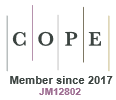Just Accepted
This article has been peer reviewed and accepted for publication. It is in production and has not been edited, so may differ from the final published form.
Response of a koala (Phascolarctos cinereus) source population following a large-scale progressive translocation harvest
Abstract
Context: Translocation is an important tool for species conservation. However, comparatively few translocation programs have investigated the impacts on source populations. The distribution and size of a koala (Phascolarctos cinereus) population occupying a rapidly urbanising landscape in Southeast Queensland, Australia, were investigated before and after progressive removal of koalas. Aims: This study investigated how the population responded following translocation of 166 koalas over a 5-year period concomitant with loss of habitat. Methods: Baseline surveys conducted in 2006 were compared to post-translocation surveys of the same area in 2017. Survey sites were located on a grid positioned over the study area. Sites were sampled using scat surveys to measure koala activity and fixed-radius searches for koalas to estimate population density. Key results: The koala population size estimated in 2017 (440 ± 66 SE) was not markedly different to that for 2006 (510 ± 67 SE), with koalas occupying remaining habitat at similar density. The analysis did not identify any significant change in occupancy between survey periods. Estimates of the probability of detection were high in both periods with the preferred tree species group having values > 0.8. Naïve occupancy estimates from raw field data were consistent with that predicted by modelling. Conclusions: The results suggest that relatively large source populations of koalas can cope with a progressive translocation harvest. Implications: The population coped better than anticipated. Regardless, monitoring is important as the new town centre is completed. Further management actions may be necessary to support and sustain the remaining population.
PC25001 Accepted 02 May 2025
© CSIRO 2025



